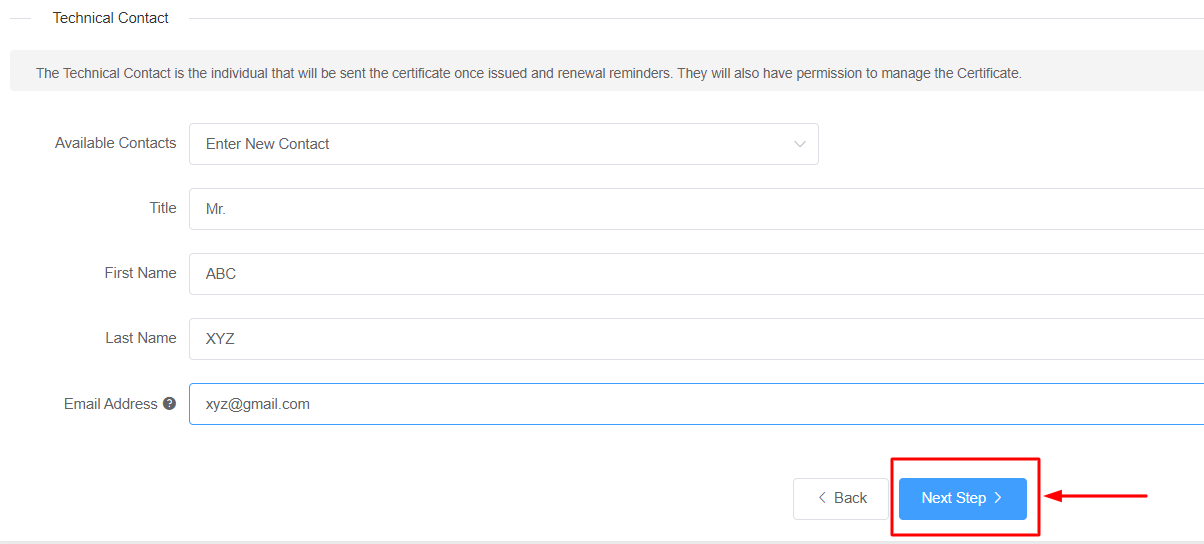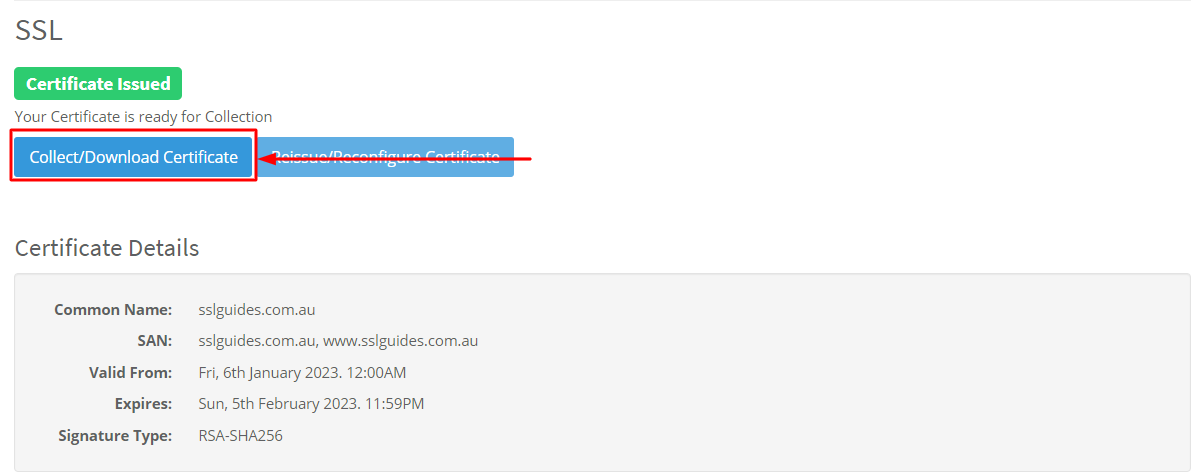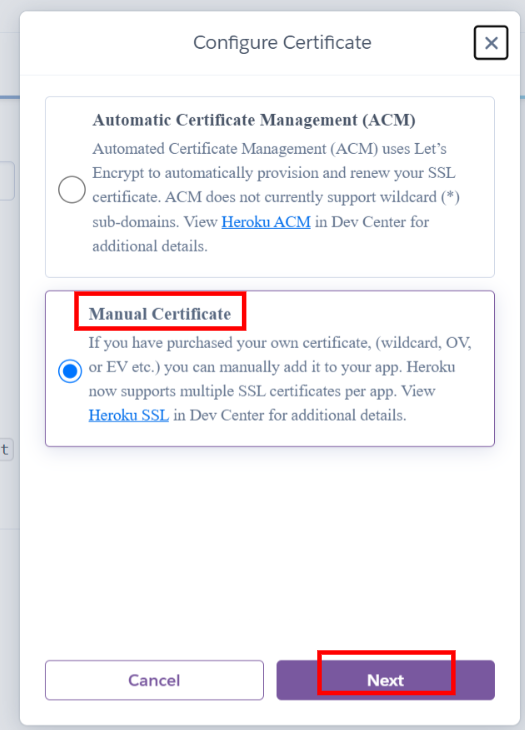Since 2007, Heroku has been a top choice for cloud application deployment. With over 8 million apps hosted and a diverse user
base, Heroku simplifies building and managing applications. Its seamless integration with popular languages and frameworks
empowers teams to focus on innovation, making it a leading solution for developers worldwide.
- Step 1: Generating a CSR and Private Key
- Step 2: Order and Configure the SSL Certificate
- Step 3: Upload the SSL Certificate Files to your Server
- Step 4: Test the SSL Certificate
Step 1. Generating a CSR and Private Key
CSR:- The Key to Client-Server
A CSR serves as the key to establishing trust between clients and servers in the SSL ecosystem. Generated by the client, it
encapsulates essential information such as the server's public key and organizational details, which are verified by Certificate
Authorities. SEO benefits from optimized CSR management, as it fosters secure connections, elevating website credibility and
search engine rankings through robust encryption protocols and heightened user trust.
Navigate to SSLTrust's CSR Generator and generate your CSR and Private Key.
Note:- Save the generated Private Key and CSR on your device. This might come in handy if you want to re-do the configuration.
Step 2. Order and Configure the SSL Certificate
The following step in the installation process is to order and configure SSL Certificate. We recommend SSLTrust because of our exceptional Customer Service, Money Back guarantee and SSL Installation Service. Here is a bit of information about SSL Certificates to help choose the best for you and your website.
DV, OV, EV – what do all these letters mean, and why are they important for your website? In this guide, we'll break down the alphabet soup of
SSL certificates, explaining the differences between Domain Validation (DV), Organization Validation (OV), and Extended Validation (EV) certificates.
Get ready to navigate the world of online security like a pro!
DV (Domain Validated) SSL certificates verify only domain ownership, making them the quickest and most affordable option suitable for basic
encryption needs. OV (Organization Validated) certificates validate domain ownership and the organization's identity, offering increased credibility.
EV (Extended Validation) certificates provide the highest level of assurance, undergoing a rigorous validation process that includes verifying legal
entity details, resulting in a distinct green address bar in web browsers, enhancing trust and security for visitors.
SSLTrust has established partnerships with all the leading SSL Certificate Authorities and here are some of our best sellers you can choose from:-
Comodo Positive SSL - Perfect for a small business or a portfolio to secure a single website
Sectigo Business SSL - Affordable Business Grade Security for organizations
Verokey Secure Business Pro Multi Domain SSL - Tailored Enterprise Security Solution for multiple company domains
In conclusion, choosing the right SSL certificate type depends on the level of validation and trust you want to establish for your website. Whether you opt for a DV, OV, or EV certificate, implementing SSL encryption is crucial for protecting sensitive data and providing a secure browsing experience for your users. If you're still unsure of what certificate to choose for your business, please contact our Sales Team and they will be glad to help you out.
1: Once you've added the SSL Certificate into your cart, you can now click on Checkout to complete the process.

Fill in your account details

Choose your preferred mode of payment and click on checkout.

2: After you have purchased the SSL Certificate, you can start the configuration process.
This can be started by going into your SSLTrust account and managing your recent purchase.
Head over to the SSLTrust Dashboard and under Services, select My Services.

You should be able to see your purchased certificate and order status, now click on Manage

This will take you to the Product Details of your SSL Certificate. Click on start configuration to do the configuration yourself or you can provide the URL below to the appropriate person to complete the configuration for you.

3: Copy and paste the previously generated CSR (Certificate Signing Request) which should include:-
-----BEGIN CERTIFICATE REQUEST----- -----END CERTIFICATE REQUEST-----

Then, click on Verify CSR.
If the CSR details match the inputs you've entered before, you can now proceed or else generate a new CSR with proper details.

Select the Server Type and click on Next Step>

4: Fill in your contact information

If you have a technical contact managing the certificate for you, please enter their details.
They will also have permission to manage the Certificate and will be sent renewal reminders.

To obtain a business SSL certificate, you will need to provide your business details, including your correct address, phone number, and legal entity name. The Certificate Authority will verify the accuracy of this information. If there are any mistakes, it may cause delays in the process.
Then, click on Next Step
5: The next step in this process is Domain Control Validation (DCV).
DCV, or Domain Control Validation, is a crucial step in SSL certificate issuance. It verifies that the entity requesting the certificate has control over the specific domain by utilizing methods like email verification, file uploads, or DNS changes. This process ensures the legitimacy of SSL certificates and enhances online security.

Select the method that is easiest for you. Having an email address with the domain name will be the quickest.
You will be sent an email containing a link which when clicked upon should validate your domain name.
In HTTP/HTTPS File Validation Method, you can create a folder in the specified and directory, paste in the contents and your domain should be validated.

The final method to validate your domain name would be CNAME Validation. Basically you have to create a CNAME record in your DNS Settings to validate your domain name and then click on the Check DNS Record button to verify DNS changes.

After a few seconds or minutes depending on your DNS propagation speed, the CNAME record should be verified.

The configuration should be a success. Click on the button below to access the validation manager.

6: Your certificate should have now been issued if you completed all the above steps correctly.

If not, click on Domain Control Validation, and re-submit whatever method you chose for validation.
Upon completing domain validation using the chosen method, your SSL certificate will be issued. If you have ordered a Business SSL, you will need to wait for the Certificate Authority to verify your business address and phone number. If the validation process has not been completed or you have not received your certificate after a certain period of time, please reach out to the support team to check on the status of your certificate.
Step 3. Upload the SSL Certificate Files to your Server
Once your SSL certificate has been issued, you will receive an email with the certificate directly from the Certificate Authority. Alternatively, you can download the certificate from the SSLTrust Portal, which presents the certificate in a convenient, easy-to-use format.
Again, head over to the SSLTrust Dashboard and click on your certificate:-

1: Click on Collect/Download Certificate-

Go to the first column and click on copy to clipboard

2: Login to your account on Heroku and you will see the project dashboard. Select/create your project

3: Click on Settings on the top menu and navigate to SSL Certificates at the bottom.

4: Click on "Configure SSL"

5: Choose the "Manual Certificate" option

6: Paste in your copied primary certificate in the CRT dialog box and the private key in the next dialog box

7: Furthermore, head back to the certificate collection page and click on copy to clipboard on the Intermediate certificate.

Proceed to paste your Intermediate Certificate in the first Dialog Box just after the main certificate.
The certificate box should look like this:-
-----BEGIN CERTIFICATE----- MAIN CERT DATA -----END CERTIFICATE----- -----BEGIN CERTIFICATE----- INTERMEDIATE CERT DATA -----END CERTIFICATE-----
8: Finally, click on Next.
Now, navigate to https:// yourdomain.com to view your secure website.
Step 4. Test the SSL Certificate
SSL Labs, now called Qualys SSL Labs, is a web service providing tools to analyze and test the SSL/TLS configurations of web servers. Its SSL Server Test assesses various security aspects, assigning a grade based on the server's overall security posture. This tool is widely used by administrators and security professionals to ensure secure server configurations and identify vulnerabilities.
We recommend you use this tool to check the install has been completed successfully: www.ssllabs.com/ssltest/
 You may need to get your web developer, or update your website yourself, to make sure all files use https:// and all links to your site and within your website use https://
You may need to get your web developer, or update your website yourself, to make sure all files use https:// and all links to your site and within your website use https://
If you require any assistance with your SSL Installation please contact our friendly support team.
